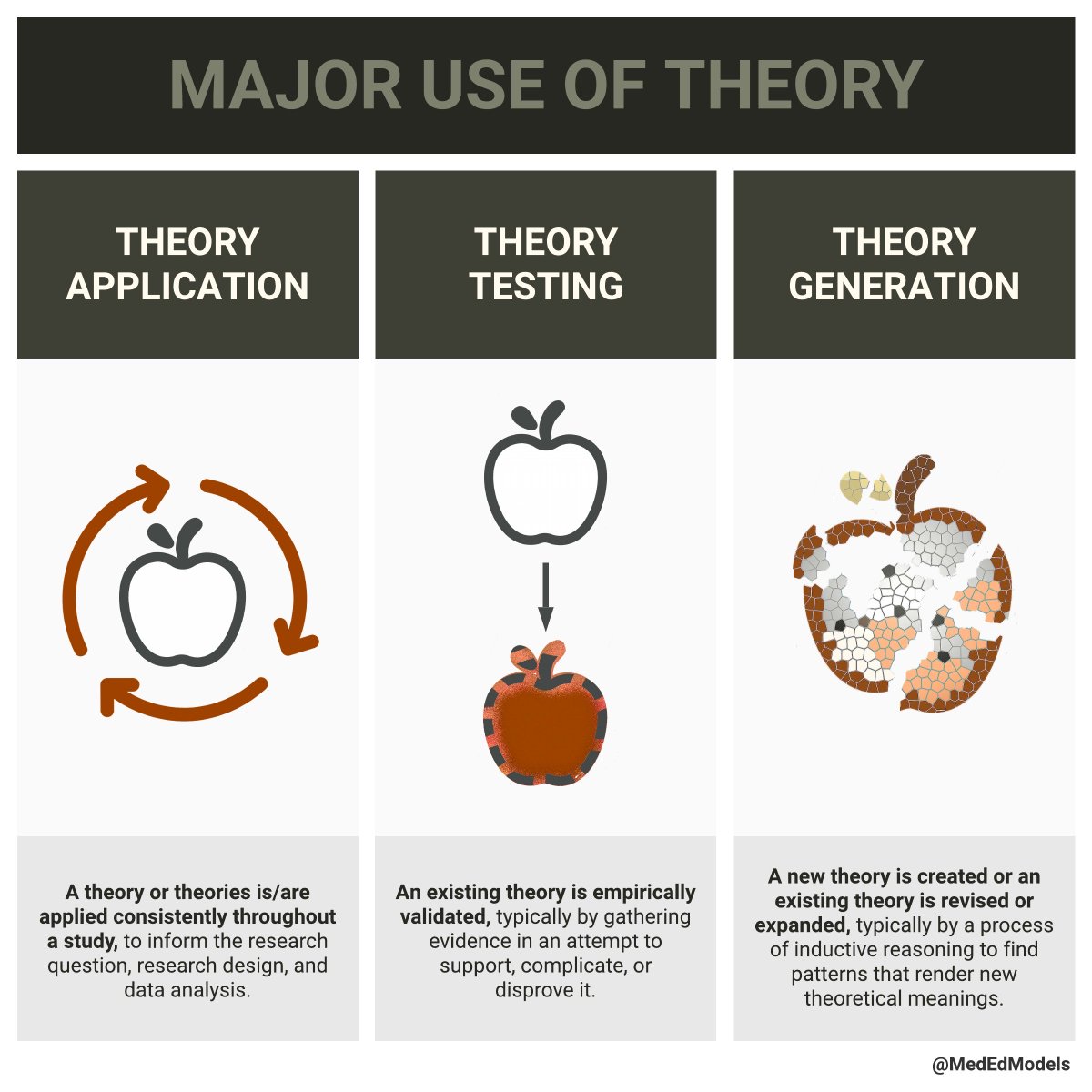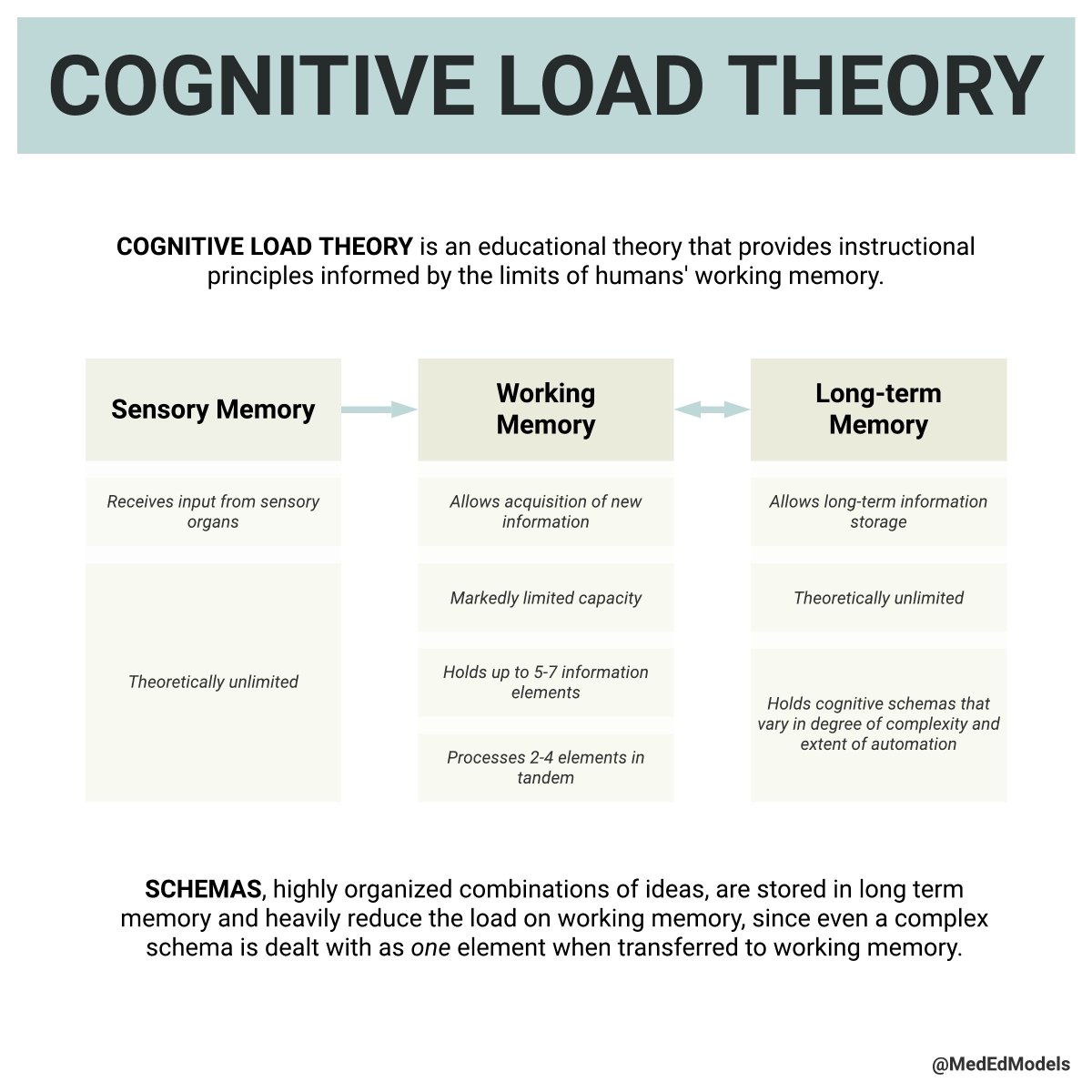#MedTwitter – we are excited to share with you a new #MedEd Model!
This #Tweetorial is on Use of Theory – we’ll take you from “knows” to “knows how” – with support from the fantastic @bobrien_15!
This #Tweetorial is on Use of Theory – we’ll take you from “knows” to “knows how” – with support from the fantastic @bobrien_15!

We’re Educators through and through, so our objectives are below our #Tweetorial objectives.
We’ll start with big concepts, define some confusing terms, and then get very practical. Stick with us!
We’ll start with big concepts, define some confusing terms, and then get very practical. Stick with us!

We have to begin by making sure we’re speaking the same language.
Theory, theoretical framework, and conceptual framework are used in a variety of ways.
Check out the image for definitions that we find helpful for each of these important #MedEd terms.
Theory, theoretical framework, and conceptual framework are used in a variety of ways.
Check out the image for definitions that we find helpful for each of these important #MedEd terms.

Colleagues from #InformationScience offer a taxonomy for Use of Theory – it’s called the “theory talk framework.”
According to Theory Talk, use of theory can be:
- Minimal
- Moderate
- Major
Let’s start with minimal use of theory.
According to Theory Talk, use of theory can be:
- Minimal
- Moderate
- Major
Let’s start with minimal use of theory.

Minimal uses of theory are cursory. See the image below for more details!
Now, some #RealTalk:
#MedTwitter, when’s the last time you remember Theory Dropping?
Reply here and let us know!
Now, some #RealTalk:
#MedTwitter, when’s the last time you remember Theory Dropping?
Reply here and let us know!

Moderate uses of theory are more rigorous.
In this category, theory conversation and theory mapping are particularly compelling uses!
Check out the image below for more details!
In this category, theory conversation and theory mapping are particularly compelling uses!
Check out the image below for more details!

Major use of theory (using theory well!) requires really grasping a theory and applying it consistently to your work. #PeakAcademia
Check out the details & reply w/ your proudest theory #achievement.
Haven’t achieved major use of theory before? No worries. Tips are on the way!
Check out the details & reply w/ your proudest theory #achievement.
Haven’t achieved major use of theory before? No worries. Tips are on the way!

We adapted some outstanding guiding principles from @AcadMedJournal (bit.ly/3kZCi5T) and added connections between them and the #TheoryTalk framework.
See the image for practical tips on how to be a better theory user!
See the image for practical tips on how to be a better theory user!

For this #MEM, the #CoffeeTalkControversy is an analogy: the uses of theory from Theory Talk reminded us in some ways of the levels from Bloom’s Taxonomy.
Check out the image and share your reflections, #MedTwitter!
Do you find this analogy helpful?
Check out the image and share your reflections, #MedTwitter!
Do you find this analogy helpful?

We’re super lucky for this #MEM to have support and a comment from @bobrien_15! Thank you for participating, Bridget! 

Here’s the take homes. Let us know what you learned!
How will this affect your approach to scholarship or #MedEd?
How will this affect your approach to scholarship or #MedEd?

#MEM is just a primer! So let us set you up To Learn More (#2LM)!
Check out the work of these incredible scholars:
@bobrien_15
@LaraVarpio
@ep_qc
@meredithyoung1
@dr_kumasi
@abbattist
Particularly in:
@AcadMedJournal @MedEd_Journal @advhlthsciedu @jste1924
Check out the work of these incredible scholars:
@bobrien_15
@LaraVarpio
@ep_qc
@meredithyoung1
@dr_kumasi
@abbattist
Particularly in:
@AcadMedJournal @MedEd_Journal @advhlthsciedu @jste1924

If you prefer to review this material in a text-only format or if you are using a screen reader, you can use the following link to access a text-only document: bit.ly/use-of-theory-…
• • •
Missing some Tweet in this thread? You can try to
force a refresh












